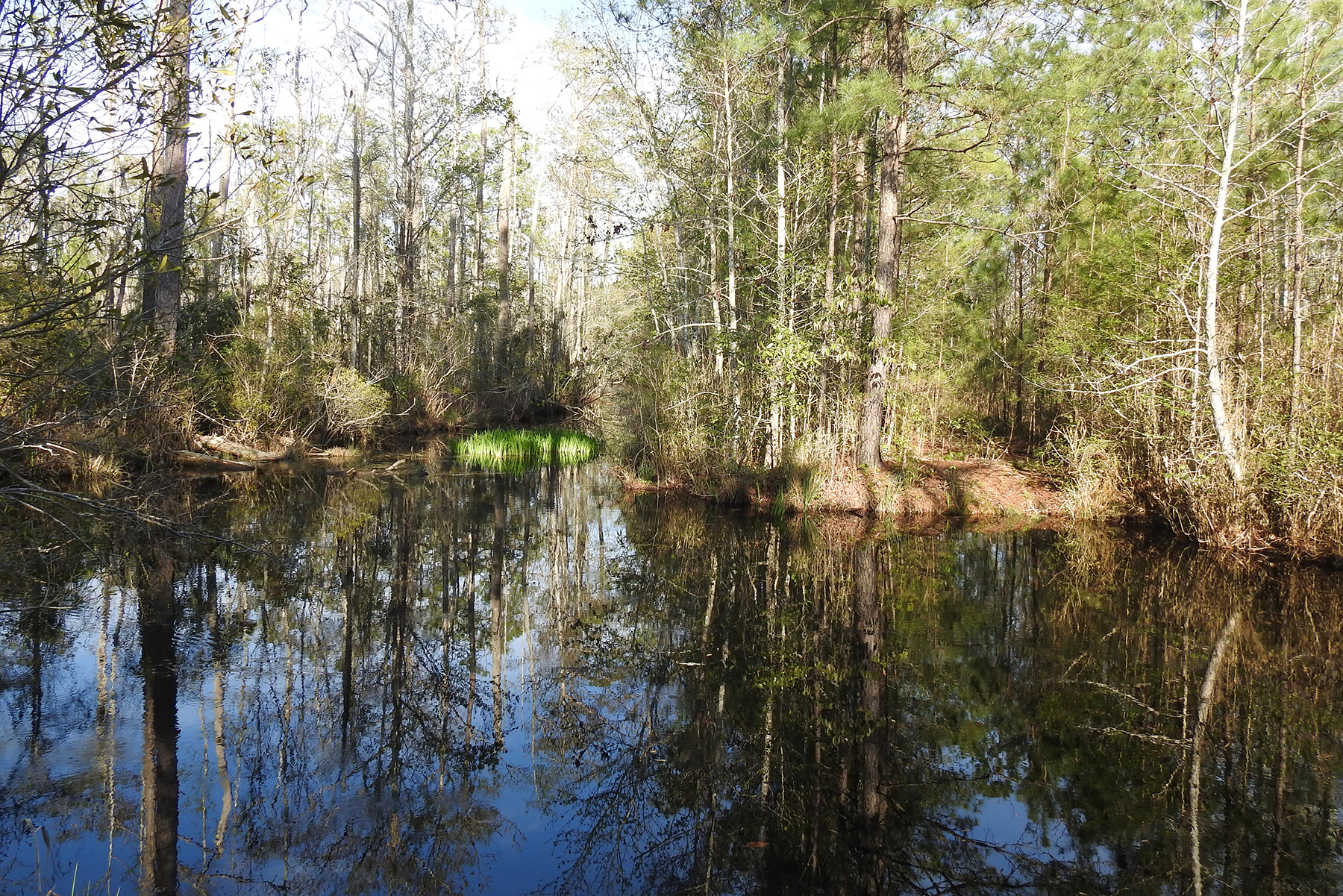Driveable Destination
The Alligator River National wildlife Refuge

Did you know that North Carolina’s coastal region is home to nine national wildlife refuges? Our state’s rich ecology, brimming with diverse wildlife and beautiful landscapes, provides countless opportunities for outdoor education and entertainment. The coastal plain and tidal regions alone have estuaries; wetlands; mangrove, swamp, and tidal forests; vegetated shorelines; and other types of ecosystems.
One such environment is the Alligator River National Wildlife Refuge. Located between the Alligator River Bridge on Highway 64 and the intersection of Highways 64 and 264 approaching the Outer Banks, Alligator River National Wildlife Refuge offers a broad range of activities to do, places to see, and things to learn.
The refuge was established in 1984 to protect rare pocosin wet-lands and accompanying wildlife; as explained by the National Oceanic and Atmospheric Association (NOAA), a pocosin wetland is a rare ecosystem formed by the accumulation of organic matter over thousands of years. Pocosin wetlands provide habitats for a vast number of species, protect against fires and flooding, and sequester excess carbon and other elements. Unfortunately, the prevalence of pocosin wetlands in the southeast has diminished severely in recent decades for the purpose of land and resource development. However, refuges like Alligator River are working towards protecting these ecosystems and the organisms that reside within them. Not to mention, wildlife refuges maintain a range of activities for visitors to enjoy and to help promote environmental stewardship in the coastal region and beyond.
If you’re on your way to a beach vacation at the Outer Banks or you find yourself in North Carolina’s captivating coastal region for any other reason, consider stopping by the Alligator River Refuge for a day of outdoor adventure. The U.S. Fish & Wildlife Service’s online page detailing the Refuge shares a list of activities to enjoy while visiting, including:
– Driveable tour of the refuge;
– Open-air tram tours;
– Canoeing or kayaking (15+ miles of color-coded paddling trails);
– Wildlife watching;
– Ranger-led programs;
– Hiking (two universally-accessible, half-mile, one-way trails – Sandy Ridge Wildlife and Creef Cut Wildlife Trails; refuge roads and open exploration are available for walking as well);
– Fishing;
– Birdwatching;
– Non-motorized and motorized boating;
– Photography;
– Biking;
– Educational programs (check out the event calendar online);
– Horseback riding.
Be sure to do some quick research to check when the above activities are allowed, and if you’ll need to acquire a permit before your visit.
I hope you’ll consider taking a day trip to the Alligator River National Wildlife Refuge or adding it as a stop on your way to one of North Carolina’s many beautiful beaches. Additionally, consider checking out the other national wildlife refuges in North Carolina as well (Pea Island, Pocosin Lakes, Mattamuskeet, Swanquarter, Cedar Island, Mackay Island, Currituck, and Roa-noke River National Wildlife Refuges).
Now go out and explore all that nature has to offer, and take part in environmental stewardship in North Carolina!
Special thanks to the U.S. Fish & Wildlife Service (fws.gov/refuge/alligator-river) and the National Ocean Service of NOAA (oceanservice.noaa.gov/facts/pocosin.html) for information included in this article.
If you have any favorite excursions we should consider for future Driveable Destination features, please share them with us at info@circamagazine.com.
Grace Lower
A student at UNC-Chapel Hill in the Gillings School of Global Public Health, studying Biology and Environmental Health Sciences. She is an outdoor enthusiast who also enjoys dance, theater, teaching group fitness classes, and writing for CIRCA Magazine.

